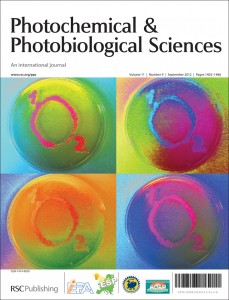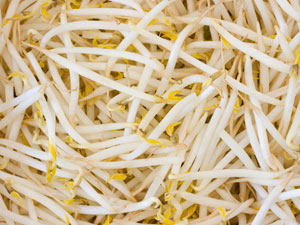This month sees the following articles in PPS that are in the top ten most accessed:-
Heteroaromatic Donors in Donor-Acceptor-Donor Based Fluorophores Facilitate Zinc Ion Sensing and Cell Imaging
Sivaramapanicker Sreejith, Kizhumuri P. Divya, Purushothaman Jayamurthy, Jomon Mathew, V. N. Anupama, Divya Susan Philips, Palappuravan Anees and Ayyappanpillai Ajayaghosh
Photochem. Photobiol. Sci., 2012, Advance Article, DOI: 10.1039/C2PP25110H, Paper
Structural effects on the pH-dependent fluorescence of naphthalenic derivatives and consequences for sensing/switching
Shuai Zheng, P. L. Mark Lynch, Terence E. Rice, Thomas S. Moody, H. Q. Nimal Gunaratne and A. Prasanna de Silva
Photochem. Photobiol. Sci., 2012, Advance Article, DOI: 10.1039/C2PP25069A, Paper
Photoswitchable fluorescent diarylethene derivatives with short alkyl chain substituents
Yuta Takagi, Tomohiro Kunishi, Tetsuro Katayama, Yukihide Ishibashi, Hiroshi Miyasaka, Masakazu Morimoto and Masahiro Irie
Photochem. Photobiol. Sci., 2012, Advance Article, DOI: 10.1039/C2PP25078K, Paper
History of phototherapy in dermatology
Herbert Hönigsmann
Photochem. Photobiol. Sci., 2012, Advance Article, DOI: 10.1039/C2PP25120E, Perspective
Fluorescence photoswitching and photoreversible two-way energy transfer in a photochrome-fluorophore dyad
Karima Ouhenia-Ouadahi, Rémi Métivier, Stéphane Maisonneuve, Aurélie Jacquart, Juan Xie, Anne Léaustic, Pei Yu and Keitaro Nakatani
Photochem. Photobiol. Sci., 2012, Advance Article, DOI: 10.1039/C2PP25129A, Paper
On the genesis of heterogeneous photocatalysis: a brief historical perspective in the period 1910 to the mid-1980s
N. Serpone, A. V. Emeline, S. Horikoshi, V. N. Kuznetsov and V. K. Ryabchuk
Photochem. Photobiol. Sci., 2012, Advance Article, DOI: 10.1039/C2PP25026H
Engineered photoreceptors as novel optogenetic tools
Andreas Möglich and Keith Moffat
Photochem. Photobiol. Sci., 2010,9, 1286-1300, DOI: 10.1039/C0PP00167H, Perspective
Remarkable fluorescence enhancement of benzo[g]chromen-2-ones induced by hydrogen-bonding interactions with protic solvents
Atsushi Kobayashi, Kazuyuki Takehira, Toshitada Yoshihara, Seiichi Uchiyama and Seiji Tobita
Photochem. Photobiol. Sci., 2012,11, 1368-1376, DOI: 10.1039/C2PP25055A, Paper
Dynamics of ion-regulated photoinduced electron transfer in BODIPY-BAPTA conjugates
Pinar Batat, Guillaume Vives, Robin Bofinger, Ren-Wei Chang, Brice Kauffmann, Reiko Oda, Gediminas Jonusauskas and Nathan D. McClenaghan
Photochem. Photobiol. Sci., 2012, Advance Article, DOI: 10.1039/C2PP25130B, Paper
2-Hydroxyphenacyl ester: a new photoremovable protecting group
Bokolombe Pitchou Ngoy, Peter Šebej, Tomáš Šolomek, Bum Hee Lim, Tomáš Pastierik, Bong Ser Park, Richard S. Givens, Dominik Heger and Petr Klán
Photochem. Photobiol. Sci., 2012,11, 1465-1475, DOI: 10.1039/C2PP25133G, Paper
Why not take a look at the articles today and blog your thoughts and comments below.
Fancy submitting an article to PPS? Then why not submit to us today or alternatively email us with your suggestions.












